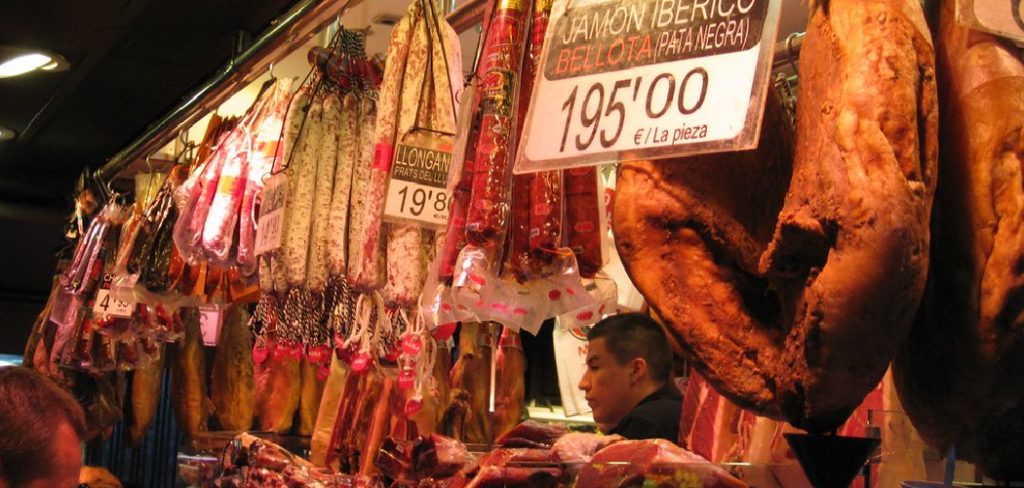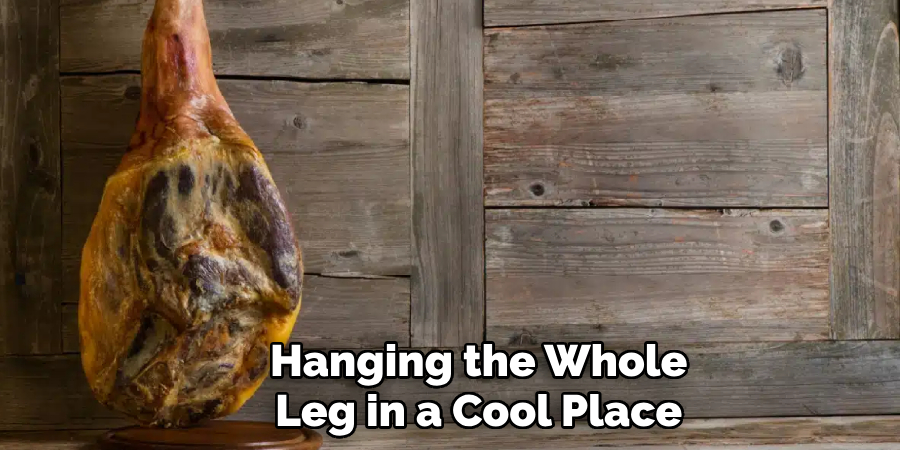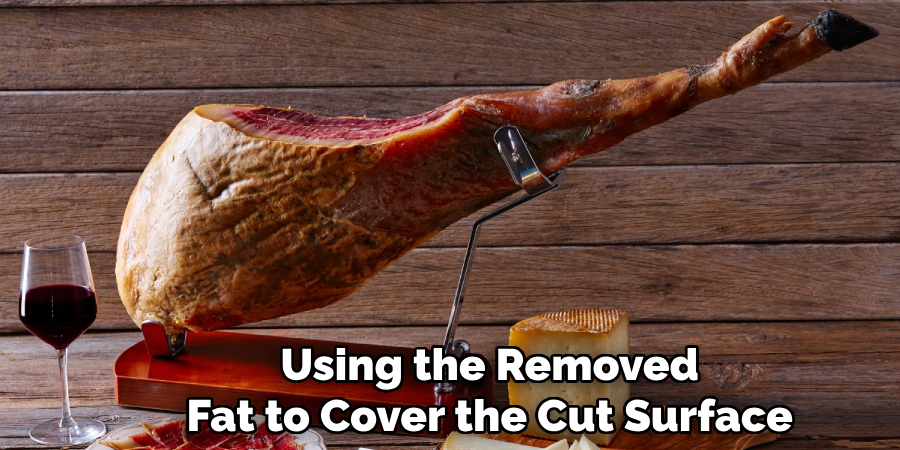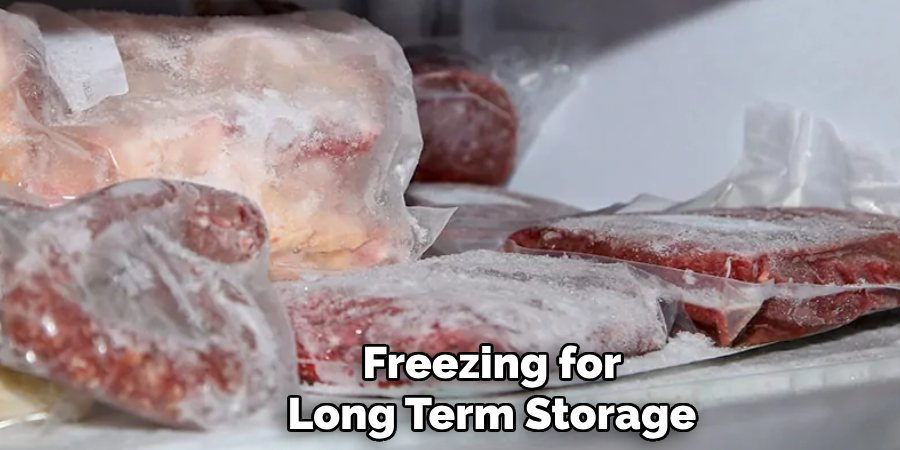Jamon Serrano, a traditional Spanish cured ham, is renowned for its rich flavor and delicate texture. Proper storage is essential to maintain its quality and ensure it remains fresh for as long as possible. Whether you’ve purchased a whole leg or pre-sliced portions, understanding how to store Jamon Serrano correctly will help preserve its taste and prevent spoilage.

This guide will provide key tips for storing your Jamon Serrano properly, so you can enjoy it at its best.
Importance of Proper Storage
Proper storage of Jamon Serrano is crucial to maintaining its flavor, texture, and overall quality. Since it is a cured product, exposure to improper conditions such as excessive moisture, direct sunlight, or extreme temperatures can negatively impact its taste and lead to spoilage. Storing it correctly ensures that the ham retains its signature aroma and rich flavor for an extended period.
Additionally, thoughtful storage practices help to prevent the growth of mold or bacteria, safeguarding both the product and your health. By following the right methods, you can enjoy this culinary delicacy at its peak, enhancing your dining experience.
Where to Store It (Hanging vs. Resting on a Holder)
When storing a whole leg of Jamon Serrano, you have two primary options: hanging it or placing it on a holder. Hanging the ham is the traditional method and allows for proper air circulation, which can help prevent moisture buildup and maintain the ham’s texture. This method is particularly recommended if you plan to store the ham for an extended period without slicing it frequently. Be sure to hang it in a cool, dry place away from direct sunlight and humidity.
Alternatively, if you anticipate slicing the Jamon Serrano often, storing it on a holder may be more practical. A jamonero, or traditional ham holder, secures the leg in place, making it easier to carve while still providing stability and protection. When resting on a holder, cover the exposed cut surface with a clean cloth or the trimmed fat from the ham itself to keep it from drying out. Whether you choose to hang it or use a holder, maintaining consistent cool and dry conditions is key to preserving the ham’s quality.
Why Freezing is Not Ideal for Jamón Serrano
Freezing Jamón Serrano is generally discouraged due to its impact on the ham’s texture and flavor. As a cured product, Jamón Serrano has already undergone a preservation process that makes freezing unnecessary under proper storage conditions. When frozen, the delicate fibers of the ham can be damaged, leading to a texture that becomes mushy or grainy after thawing. Furthermore, freezing can compromise its rich, nuanced flavor as the fat, which plays a key role in its taste, may lose its creamy consistency.
Instead of freezing, it is better to store Jamón Serrano in a cool, dry place or refrigerate properly sliced portions for short-term use. This approach ensures that the ham retains its authentic quality and remains a true culinary delight.
10 Methods How to Store Jamon Serrano
1. Hanging the Whole Leg in a Cool, Dry Place
Traditional storage for an entire leg of Jamón Serrano involves hanging it in a cool, dry, and well-ventilated place. This method allows the ham to breathe while preventing moisture accumulation that could lead to spoilage. Ideal locations include a pantry, cellar, or specialized ham holder.
Ensure that the area is free from excessive humidity and direct sunlight to maintain the ham’s texture and prevent mold growth. Under these conditions, a whole leg can last several months without refrigeration.

2. Using a Ham Holder (Jamonero) for Daily Use
If you frequently consume Jamón Serrano, using a ham holder or “jamonero” is an excellent method for storage. The holder keeps the leg stable, making slicing easier while allowing air circulation to maintain its texture. When storing in a jamonero, cover the exposed meat with a breathable cloth or the removed layer of fat to prevent it from drying out excessively.
3. Covering with a Cotton Cloth for Protection
Once you have sliced into the leg, the cut area should be covered with a clean cotton cloth. Unlike plastic, which can trap moisture and alter the flavor, a cotton cloth allows the ham to breathe while protecting it from dust and contaminants. This method is perfect for preserving the natural characteristics of the ham without altering its texture or taste.
4. Using the Removed Fat to Cover the Cut Surface
An effective traditional technique to maintain the freshness of Jamón Serrano is to use its own fat. After cutting, place thin slices of the removed fat over the exposed meat before covering it with a cloth. The fat acts as a natural barrier, preventing excessive drying and helping to retain the ham’s rich flavors.

5. Storing Sliced Jamón Serrano in the Refrigerator
If you have pre-sliced or leftover pieces of Jamón Serrano, refrigeration is a viable option. Place the slices in an airtight container or wrap them tightly in parchment paper before sealing them in a plastic bag.
This prevents moisture loss and minimizes exposure to air, which can cause oxidation. When properly stored in the refrigerator at temperatures between 4-8°C (39-46°F), sliced Jamón Serrano can last up to three weeks.
6. Vacuum Sealing for Extended Freshness
Vacuum-sealing Jamón Serrano is one of the best methods for preserving it for an extended period. By removing all the air, vacuum sealing prevents oxidation and microbial growth, keeping the ham fresh for months. This method works particularly well for both whole pieces and sliced portions. When ready to consume, let the vacuum-sealed ham reach room temperature before opening the package to restore its full flavor and aroma.
7. Freezing for Long-Term Storage
Although not commonly recommended, freezing Jamón Serrano is an option if you need to store it for an extended period. To freeze, wrap the ham tightly in plastic wrap, followed by a layer of aluminum foil, and place it in a freezer-safe bag. Frozen Jamón Serrano can last up to six months, but it may lose some of its original texture. When thawing, do so gradually in the refrigerator over 24 hours to prevent excessive moisture loss.

8. Storing in Olive Oil for Preservation
For a unique preservation method, store sliced Jamón Serrano in olive oil. Place the slices in an airtight glass container and cover them with high-quality olive oil. This method helps maintain moisture while adding a subtle richness to the ham’s flavor. Stored this way in the refrigerator, Jamón Serrano can last for several weeks while remaining tender and flavorful.
9. Keeping Pre-Packaged Jamón Serrano Sealed Until Use
If you purchase vacuum-sealed or pre-packaged Jamón Serrano, it is best to keep it sealed until you are ready to consume it. Manufacturers design these packages to maximize freshness, and opening them prematurely can expose the ham to air, leading to faster degradation. Always store pre-packaged Jamón Serrano in the refrigerator and consume it within the recommended timeframe on the label.
10. Using Wax Paper Instead of Plastic Wrap
When storing sliced Jamón Serrano, opt for wax paper rather than plastic wrap. Plastic wrap can trap excess moisture and lead to condensation, which may compromise the ham’s texture. Wax paper allows for better air circulation while preventing excessive drying. Wrap the slices carefully and place them in a resealable container to extend their freshness.
Common Storage Mistakes to Avoid
When storing Jamón Serrano, certain practices can inadvertently shorten its shelf life or diminish its quality. Avoiding these common mistakes will help ensure that the ham remains in peak condition:
Using Plastic Wrap Directly on the Ham
Wrapping Jamón Serrano directly in plastic creates a sealed environment where moisture and condensation can accumulate. This promotes the growth of mold and alters the ham’s delicate flavor profile. Instead, use wax paper or parchment paper for better air circulation.
Storing in High-Humidity Areas
Excessive humidity can cause mold to develop on the surface of the ham. Avoid storing it in damp environments such as near open windows, damp basements, or refrigerators with inconsistent humidity levels.
Exposing to Direct Sunlight
Direct sunlight can overheat the ham, leading to uneven drying and potential spoilage. Always store Jamón Serrano in a cool, shaded area to maintain its texture and flavor.
Leaving Sliced Ham Uncovered
Leaving cut or sliced portions of Jamón Serrano uncovered, even briefly, can lead to excessive drying or hardening of the exposed areas. Always cover sliced sections with a breathable cloth or parchment paper to protect the surface.
Not Using the Removed Fat for Protection
Discarding the removed fat after slicing is a common mistake. The fat serves as a natural preservative for uncovered areas of the ham, preventing it from drying out and retaining its rich taste and texture.

Conclusion
Proper storage of Jamón Serrano is crucial to preserving its quality, whether you have a whole leg, sliced portions, or pre-packaged cuts. Traditional methods like hanging in a cool, dry place and covering with cotton cloths maintain authenticity, while modern techniques like vacuum sealing and refrigeration provide convenience.
Thanks for reading, and we hope this has given you some inspiration on how to store jamon serrano!
Professional Focus
Angela Ervin, a former interior designer turned blogger, specializes in kitchen design and renovations. Through her website, she blends her passion for cooking with design expertise, sharing practical and creative ideas. Known for balancing functionality and beauty, Angela’s insightful content has made her a trusted voice in home design and lifestyle.
About the Author
Angela Ervin, an experienced interior designer and blogger, combines her passion for kitchen renovations with storytelling. Living in Petersburg with her family, she enjoys cooking and testing her projects firsthand. Known for her humor and relatable style, Angela shares creative, functional design insights through her content, making her a trusted voice in home design.
Education History
University: Virginia Commonwealth University
Degree: Bachelor of Fine Arts (BFA) in Interior Design
- Angela’s education at VCU focused on mastering core interior design principles, including spatial planning, color theory, materials selection, and sustainable design practices.
- She gained hands-on experience through studio projects and collaborative design exercises, which honed her ability to create functional and aesthetically pleasing environments.
- Her coursework also emphasized problem-solving and practical applications of design, preparing her for real-world projects like her self-directed kitchen renovations.
- The program’s strong foundation in both technical skills and creative expression shaped Angela’s ability to seamlessly integrate form and function in her work.


